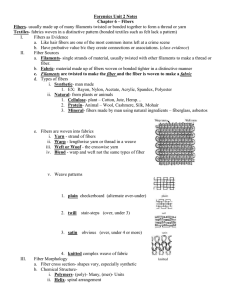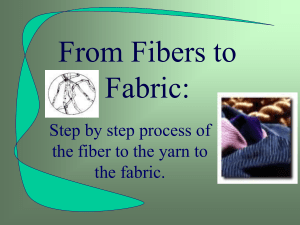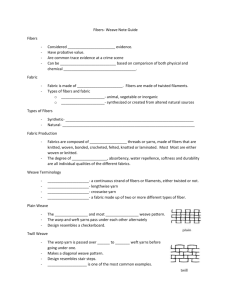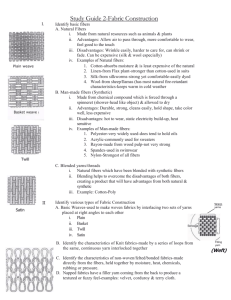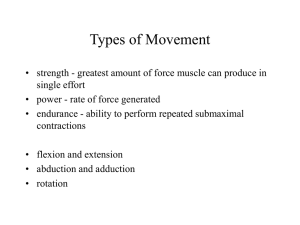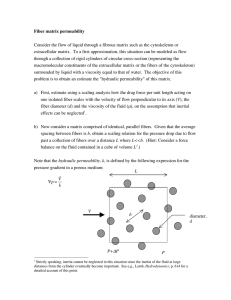Forensics Unit 2 Notes Chapter 6 – Fibers Fibers Textiles
advertisement
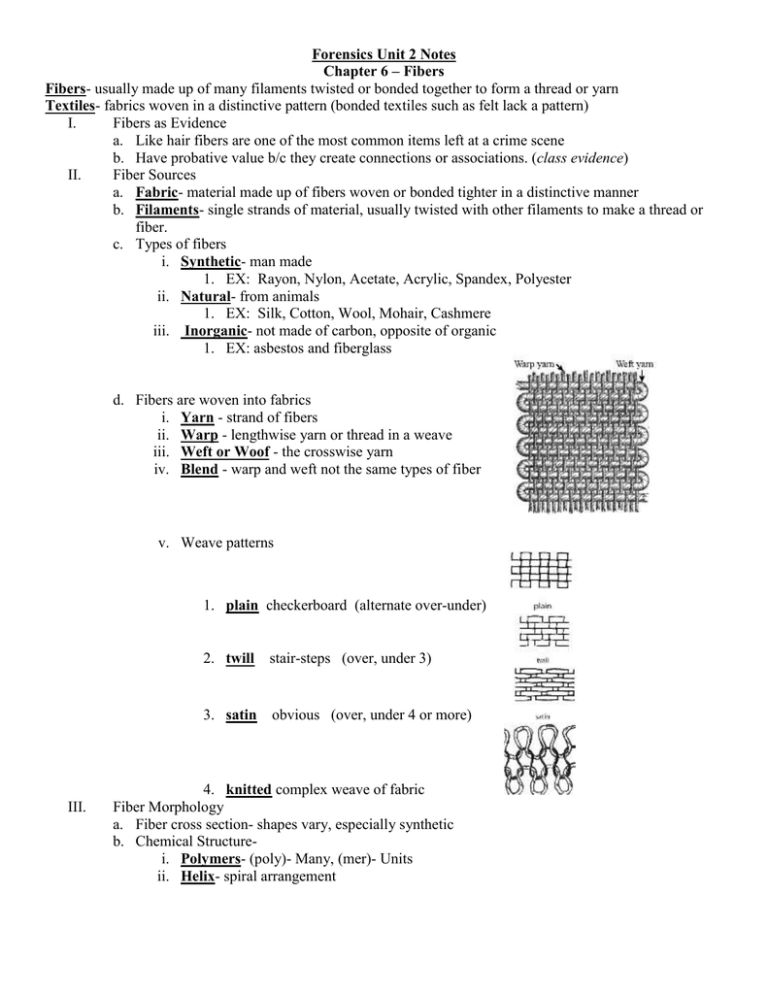
Forensics Unit 2 Notes Chapter 6 – Fibers Fibers- usually made up of many filaments twisted or bonded together to form a thread or yarn Textiles- fabrics woven in a distinctive pattern (bonded textiles such as felt lack a pattern) I. Fibers as Evidence a. Like hair fibers are one of the most common items left at a crime scene b. Have probative value b/c they create connections or associations. (class evidence) II. Fiber Sources a. Fabric- material made up of fibers woven or bonded tighter in a distinctive manner b. Filaments- single strands of material, usually twisted with other filaments to make a thread or fiber. c. Types of fibers i. Synthetic- man made 1. EX: Rayon, Nylon, Acetate, Acrylic, Spandex, Polyester ii. Natural- from animals 1. EX: Silk, Cotton, Wool, Mohair, Cashmere iii. Inorganic- not made of carbon, opposite of organic 1. EX: asbestos and fiberglass d. Fibers are woven into fabrics i. Yarn - strand of fibers ii. Warp - lengthwise yarn or thread in a weave iii. Weft or Woof - the crosswise yarn iv. Blend - warp and weft not the same types of fiber v. Weave patterns 1. plain checkerboard (alternate over-under) III. 2. twill stair-steps (over, under 3) 3. satin obvious (over, under 4 or more) 4. knitted complex weave of fabric Fiber Morphology a. Fiber cross section- shapes vary, especially synthetic b. Chemical Structurei. Polymers- (poly)- Many, (mer)- Units ii. Helix- spiral arrangement

